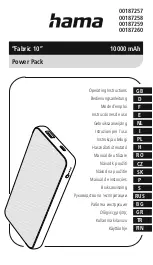
21
®
“Climb-Cutting” may cause loss of control, possibly resulting in personal injury.
When “Climb-Cutting” is required (e.g., backing around a corner), exercise
extreme caution to maintain control of the router. The high speed of the cutter
bit during a proper feeding operation (left to right), results in very little kickback
under normal conditions. However, if the cutter bit strikes a knot, an area of hard
grain, or a foreign object, “kickback” may result. Kickback may damage your
workpiece and could cause you to lose control of the router, possibly causing
personal injury.
Kickback is always in the opposite direction of the clockwise cutter bit rotation,
or counter-clockwise. To guard against and help prevent kickback, plan your
set-up and direction of feed so that you’re always keeping the sharp edges of
the cutter bit biting straight into uncut wood. Always inspect your workpiece for
knots, hard grain, and foreign objects.
ROUTING CIRCULAR ARC (fig 20)
1. Reverse the edge guide first.
2. Lock the centring pin with nut as
illustrated.
3. Insert the rods of the edge guide into
the base plate.
4. Pierce centring pin into marked centre
of circular arc.
5. Turn the locking screw clockwise to
tighten the rods.
6. Turn on the router and guide it with
consistent feed across the workpiece.
OPER
A
TING INS
TRUCTIONS
WARNING!
• Kickback causes the power tool to jerk back toward the user,
causing possible loss of control and serious injury. Always take
precautions against kickback as described in the operator’s
manual.
FPO
fig 20a
Rods
fig 20b
Locking
screw
Nut
Edge
guide
Centering
pin












































